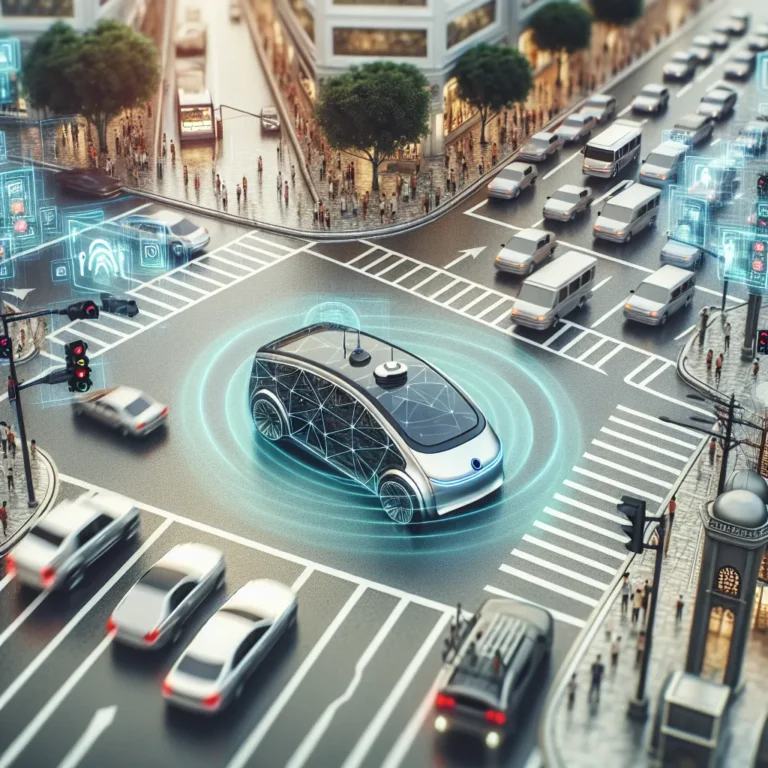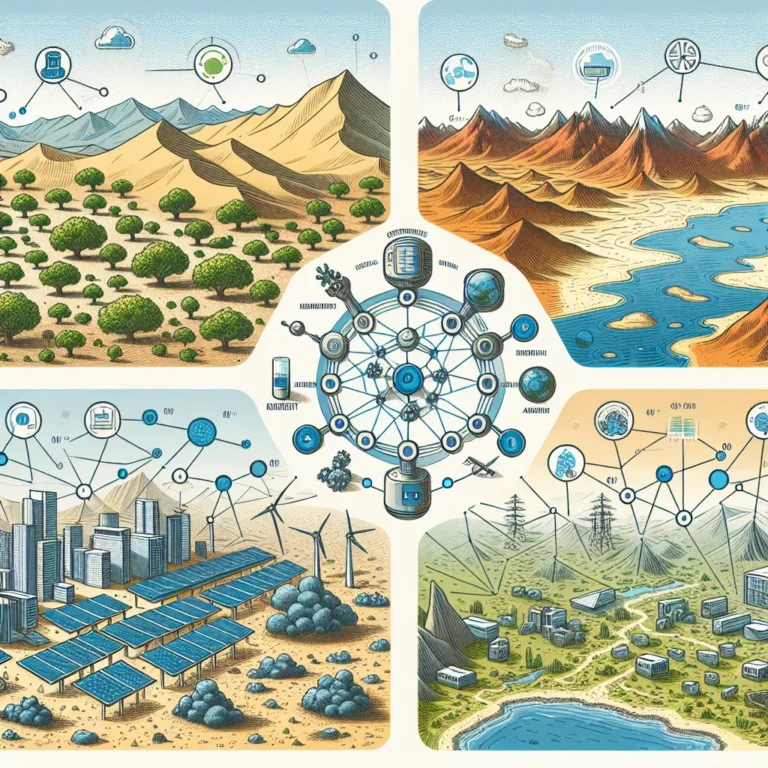
The article "Understanding the Tools and Tactics of Counter-Surveillance" emphasizes the importance of familiarizing oneself with the tools and tactics of counter-surveillance to protect privacy and security in a monitored world. It covers electronic sweeping equipment for detecting eavesdropping devices, physical surveillance detection methods, and cyber counter-surveillance measures such as encryption tools and secure communication platforms. The text concludes by highlighting the importance of actively mitigating risks posed by invasive monitoring and empowering individuals and organizations with the knowledge to counter surveillance. The subsequent section discusses key strategies for implementing effective counter-surveillance measures including physical security, digital privacy, behavioral awareness, and seeking professional assistance, ultimately encouraging readers to take proactive steps to address potential surveillance threats.

The article explores the pivotal role of advancements in sensing technologies in driving the development of autonomous vehicles. It highlights the significant progress in LiDAR, radar, and camera systems, which provide essential data for perceiving and interpreting the vehicle's surroundings. The integration of advanced sensor fusion algorithms has further improved the overall perception capabilities of autonomous vehicles, enhancing their ability to navigate urban environments and challenging road conditions. Additionally, the growing focus on the development of solid-state LiDAR promises to further improve the reliability and scalability of sensing technologies for autonomous vehicles. Overall, the continuous innovation in sensing technologies is bringing us closer to a future where safe and efficient self-driving vehicles are a reality, making the article a compelling read for those interested in the latest advancements in autonomous driving technology.

The article "Innovative Sensing Solutions for Environmental Monitoring" highlights the crucial role of advanced sensing technologies in environmental monitoring. It discusses the impact of miniaturized sensor technologies, remote sensing techniques, and data analytics systems in providing real-time data collection for environmental assessments. The integration of these innovative sensing solutions offers comprehensive insights into environmental changes and enables timely interventions, making a significant leap in our ability to protect the environment. Furthermore, the article "Advancements in Environmental Sensing Technologies" emphasizes how these solutions have revolutionized environmental monitoring by gathering real-time data on various parameters and enhancing accuracy and efficiency. It also discusses the development of cost-effective sensor devices, the integration of IoT principles, and the use of cloud computing and big data analytics in processing vast amounts of environmental data. The comprehensive coverage and real-time insights provided by these technologies make them a valuable asset for understanding and protecting the environment.

The article "Cutting-Edge Technologies for Security Screening" discusses recent advances in security screening, emphasizing the use of state-of-the-art equipment and sophisticated algorithms to enhance accuracy and efficiency. It highlights the widespread adoption of millimeter wave imaging, which allows for non-invasive detection of concealed objects and the significant improvements in explosive trace detection (ETD) technology, contributing to enhanced threat detection and mitigation. Furthermore, the integration of artificial intelligence and machine learning algorithms has bolstered the effectiveness of security screening processes by enabling automated analysis of X-ray images and swiftly assessing and flagging suspicious items. The article emphasizes that these cutting-edge technologies signify a monumental leap forward in threat detection and public safety, ensuring a more secure and resilient environment for individuals and communities. It underlines the importance of these innovations in providing enhanced threat detection and a more secure environment overall.

The article discusses the pressing concerns surrounding personal privacy in the digital age, with the proliferation of surveillance technology such as CCTV cameras, facial recognition, and data tracking software. It addresses the ethical and legal implications of constant monitoring and data collection, emphasizing the potential for unwarranted intrusion into private lives. Furthermore, it highlights the pervasive impact of surveillance technology on personal privacy through the extensive collection and analysis of personal data, raising concerns about the protection of individual privacy in the digital landscape. The article concludes by emphasizing the need for proactive measures to address the ethical, legal, and technological dimensions of this complex issue in order to safeguard personal privacy. Additionally, it provides strategies for protecting privacy in a digital world, including encryption, conscious management of personal data, the use of virtual private networks (VPNs), and staying informed about privacy laws and regulations.

The article "Maximizing Measurement Precision with Strategic Sensor Placement" emphasizes the significance of strategically situating sensors to optimize measurement precision in engineering and scientific applications. It highlights the importance of considering environmental characteristics and system dynamics to identify informative sensor locations. Furthermore, it discusses the use of advanced algorithms, modeling techniques, and smart sensor placement strategies to continuously optimize measurement processes and enhance accuracy. Similarly, the article "Enhancing Accuracy through Intelligent Sensor Positioning" underscores the pivotal role of smart sensor placement strategies in optimizing data collection. It emphasizes leveraging advanced algorithms, predictive modeling, and machine learning to ensure precise data acquisition and dynamic refinement of sensor positioning. Both articles provide comprehensive insights into the multifaceted task of maximizing measurement precision and enhancing accuracy through intelligent sensor placement, making them essential reads for engineers and scientists seeking to improve the effectiveness of sensor networks.

The article "Essential Techniques for Mastering Technical Climbing Routes" discusses crucial techniques for success in tackling complex climbing routes, emphasizing the importance of precision footwork, body positioning, finger strength, and route interpretation. The essential skills and mental focus necessary for conquering technical climbs are highlighted, with an emphasis on the need for deliberate practice and training to improve capabilities and confidence. Moreover, the piece "Overcoming Challenges: Strategies for Success on Technical Routes" underscores the importance of analyzing routes, honing technical skills, and developing mental resilience to navigate the challenges of technical climbing effectively. Overall, both articles advocate a multifaceted approach to mastering technical routes and offer valuable insights for climbers seeking to enhance their climbing abilities and conquer challenging routes.

In today's competitive business environment, the pivotal role of data analysis in enhancing business strategy cannot be overstated. By leveraging data analysis, businesses gain crucial insights into emerging trends, customer preferences, and market opportunities, essential for crafting adaptive business strategies. Moreover, effective data analysis allows businesses to tailor products and services, optimize resource allocation, and make data-driven adjustments to their overall business strategy. Harnessing the power of advanced analytics tools and technologies enables businesses to anticipate market shifts, capitalize on emerging opportunities, and mitigate potential risks, driving informed decision-making. The strategic importance of leveraging data analysis for informed decision-making cannot be overlooked, as it provides actionable insights and empowers businesses to navigate through complex and competitive landscapes.

The article discusses the significance of covert observation in surveillance and investigative practices, emphasizing its role in gathering discreet, accurate, and timely information without alerting the subjects under scrutiny. It highlights the value of this clandestine method in uncovering illicit activities, gathering incriminating evidence, and providing real-time insights into the behavior and movements of suspects. The author also underscores the ethical considerations and limitations associated with covert observation, stressing the need to navigate privacy concerns and biases while acknowledging the partial view it provides. Overall, the article presents a compelling case for the importance of covert observation in investigative work, while also highlighting the need to approach it responsibly and ethically, making it a must-read for those involved in surveillance and investigative practices.

The article explores the issues and limitations of facial detection systems, highlighting concerns regarding biases, inaccuracies, environmental factors, and privacy breaches. It emphasizes the ethical implications and societal inequalities associated with these systems, calling for stringent regulations and improved frameworks for responsible and equitable use. Additionally, it discusses the challenges in facial recognition technology, focusing on accuracy, privacy, and demographic bias. The article suggests that advancements in algorithms, data security measures, and efforts to address biases are crucial in overcoming these challenges and ensuring the widespread adoption of facial recognition technology. If you're interested in understanding the complexities and potential solutions in the field of facial detection and recognition, the full article provides valuable insights in addressing these critical issues.









